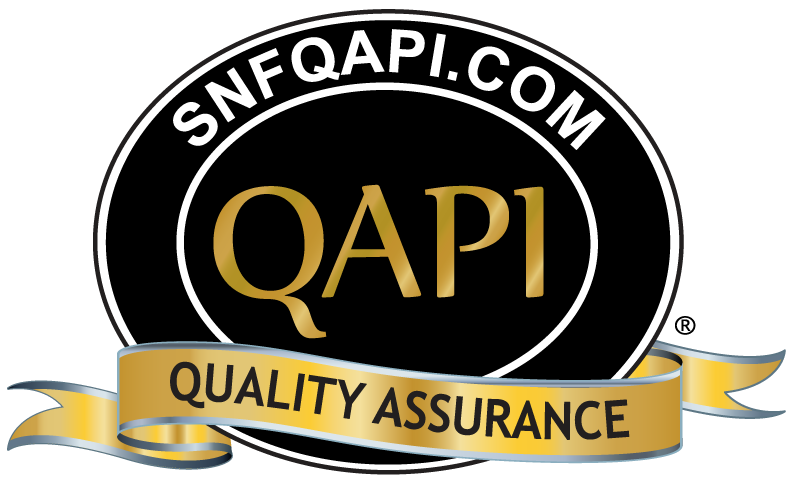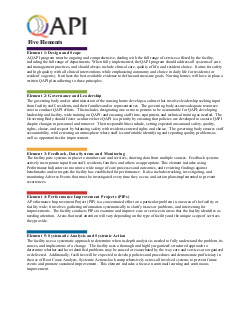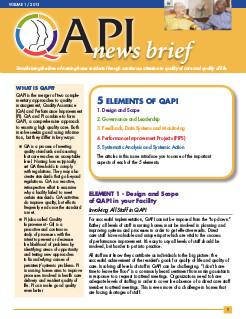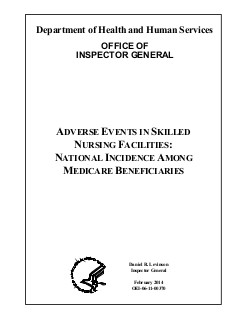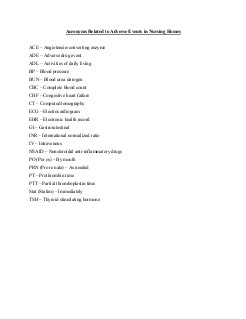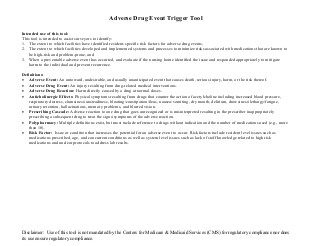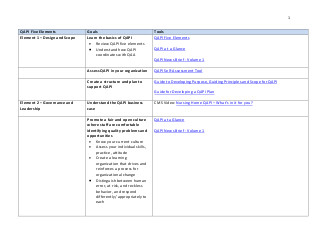Five Elements of QAPI
Element 3: Feedback, Data
Systems and Monitoring
The facility puts systems in place to monitor care and services, drawing
data from multiple sources. Feedback systems actively incorporate input
from staff, residents, families, and others as appropriate. This element
includes using Performance Indicators to monitor a wide range of care
processes and outcomes, and reviewing findings against benchmarks and/or
targets the facility has established for performance. It also includes
tracking, investigating, and monitoring Adverse Events that must be
investigated every time they occur, and action plans implemented to prevent
recurrences.
https://www.cms.gov/medicare/provider-enrollment-and-certification/qapi/downloads/qapiataglance.pdf

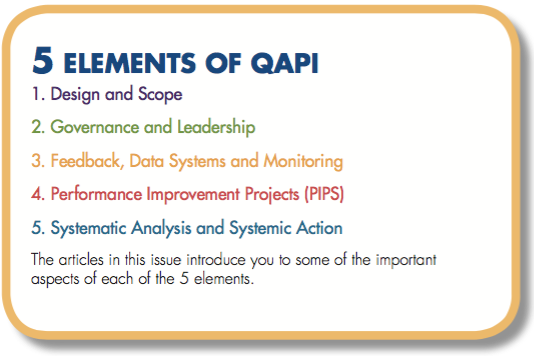
WHAT IS QAPI?
QAPI is the merger of two complementary approaches to quality management, Quality Assurance (QA) and Performance Improvement (PI). QA and PI combine to form QAPI, a comprehensive approach to ensuring high quality care. Both involve seeking and using information, but they differ in key ways:
- QA is a process of meeting quality standards and assuring that care reaches an acceptable level. Nursing homes typically set QA thresholds to comply with regulations. They may also create standards that go beyond regulations. QA is a reactive, retrospective effort to examine why a facility failed to meet certain standards. QA activities do improve quality, but efforts frequently end once the standard is met.
- PI (also called Quality Improvement - QI) is a proactive and continuous study of processes with the intent to prevent or decrease the likelihood of problems by identifying areas of opportunity and testing new approaches to fix underlying causes of persistent/systemic problems. PI in nursing homes aims to improve processes involved in health care delivery and resident quality of life. PI can make good quality even better.
ELEMENT 3 – Feedback, Data Systems and Monitoring
Making Data MeaningfulHow do you know if you are doing well?
Without a baseline or point of comparison, it is hard to judge your own
performance. A strong approach to quality management, such as QAPI,
uses performance indicators to monitor a wide range of care processes
and outcomes. Then it reviews findings against benchmarks or targets the
facility has established for performance.
Benchmark refers to a standard against which other
things can be measured or judged. You can use external results that
represent best practices and performances, often around quality, time,
and cost as the standards for setting benchmarks. Benchmarking is the
process of comparing a set of results to these best practices and
performances. For example:
- A benchmark for physical restraints in nursing homes might be zero, as many homes have achieved this rate.
- A benchmark for consistent nursing assistant assignment has been set by the Advancing Excellence in America’s Nursing Homes campaign as no more than 8 nursing assistants for one resident over a four week period, since organizations that have focused on consistent assignment have been able to achieve this result.

Good sources for benchmarks are Nursing Home
Compare and Advancing Excellence. Other sources are literature from
researchers and data analysis from industries that have similar
processes, and data from nursing home organizations that have been
recognized for leadership in a specific process area.
A target refers to an internal goal that refers to a
specific level of performance that an organization is trying to reach.
Options to determine targets include:
- Determine a target based on internal improvement over time as an organization tracks its progress while implementing changes.
- Base target on an intermediate, more achievable goal, if current performance is considerably worse than the benchmark. For example, if a home’s current high risk pressure ulcer rate is 12%, and the benchmark was 6%, they might choose to reduce the gap by 50% and set their intermediate target at 9%.
- Base target on the current national or their state’s average,
if they are currently below those targets. For example, if a home’s
current high risk pressure ulcer rate is 12%, they
might set their target at the national average rate of 8%, or their state’s current rate of 7%.
Discussing targets is a good team
exercise.
Thresholds are a measure of quality performance that
the facility feels must be achieved or their facility is at risk. A
threshold is a level which performance results must not go above or
below.
- For example, a facility sets a level for medication errors meaning that errors should not exceed this level. If errors exceed this level, the facility should analyze why they exceeded the threshold.
- If data suggests the threshold is missed, a full evaluation and root cause analysis is indicated.

|
QAPI Five Elements |
Goals |
Tools |
|---|---|---|
|
Element 3 – Feedback, Data Systems and Monitoring |
Use and make data meaningful
|
Measure/Indicator Development Worksheet Measure/Indicator Collection and Monitoring Plan Instructions to Develop a Dashboard Goal Setting Worksheet Prioritization Worksheet for Performance Improvement Projects |
